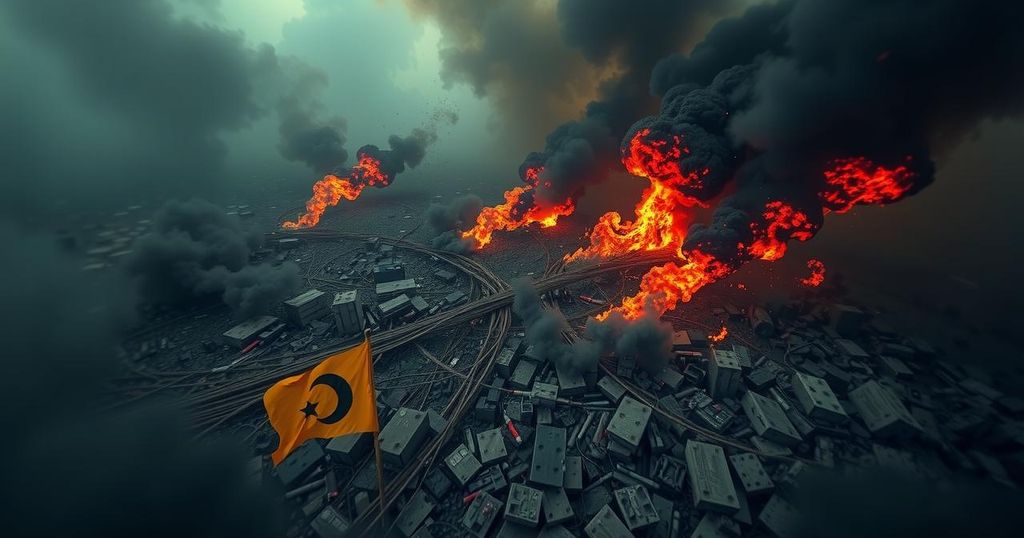Syria’s Civil War Reignites: Key Players Amid New Insurgent Offensive
The Syrian civil war has escalated with recent insurgent advances in Aleppo, reigniting global focus after years of relative calm. Government forces, aided by Russia and Iran, face significant losses, while the opposition, primarily led by Hayat Tahrir al-Sham and supported by Turkey, continues to challenge the regime. The U.S.-backed Syrian Democratic Forces maintain control in the east, highlighting the multifaceted geopolitical stakes in the region.
The Syrian civil war, ongoing since 2011, has resurfaced in global discourse following an unexpected offensive by insurgents that resulted in their taking control of significant areas in Aleppo. This resurgence comes amidst a backdrop of diminished focus and weakened positions among key actors in the conflict, which has sparked some of the fiercest clashes since the ceasefire in 2020.
Syrian government forces, bolstered by Russian and Iranian support, have maintained critical control over most urban centers, including the capital, Damascus. However, the recent loss of Aleppo, previously a government stronghold, has marked a significant setback for President Bashar Assad’s regime.
The Iranian military has historically played a pivotal role in supporting Assad’s forces, yet the recent conflict with Israel has strained Iran’s capabilities. Additionally, Iraqi militias, allied with Iran, have transferred resources to assist in the government’s counteroffensive efforts against insurgents.
On the opposing side, the predominant insurgent faction, Hayat Tahrir al-Sham (HTS), formerly recognized as al-Qaida’s affiliate, has been active in northwest Syria, converting its operational approach to gain legitimacy within the local population. This faction has become a chief adversary against Assad’s government, with other Turkish-backed groups, such as the Syrian National Army, joining the fray against U.S.-backed Kurdish forces.
The Syrian Democratic Forces (SDF), primarily composed of Kurdish fighters and supported by American military presence, control substantial regions in eastern Syria. This group continues to engage in operations against remnants of the Islamic State, showcasing the multi-faceted nature of the ongoing conflict. The dynamic interplay among these various factions underscores the complexity of Syrian geopolitics, where foreign powers remain deeply entrenched, complicating any lasting resolution.
The Syrian civil war commenced in 2011 as a result of an uprising against President Bashar Assad’s administration. The conflict has since evolved into a multi-faceted war involving several international players, including the United States, Russia, and Iran, each with differing agendas and alliances. Significant developments have included the rise and fall of various insurgent groups, the shifting of power dynamics in key cities like Aleppo, and the involvement of foreign military personnel and resources. The situation remains fluid, with recent events reigniting hostilities and drawing attention back to a crisis that has long-lasting implications for regional stability and international relations.
In summary, the recent offensives by insurgent factions in Syria have brought renewed attention to a conflict characterized by evolving alliances and power struggles. The loss of Aleppo represents a critical setback for the Assad regime, challenging the status quo established through years of foreign aid and military support. The complexity of the conflict, amplified by the involvement of various international actors, continues to pose significant challenges to peace and stability in the region, reflecting the longstanding ramifications of Syria’s civil war.
Original Source: mynorthwest.com




Post Comment